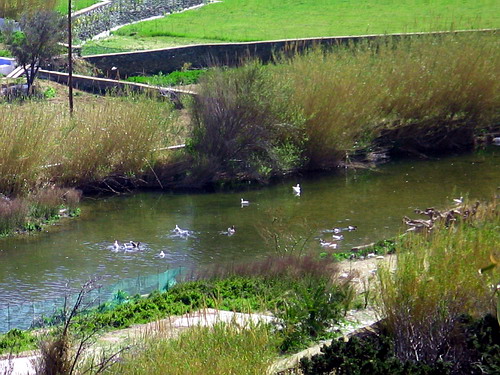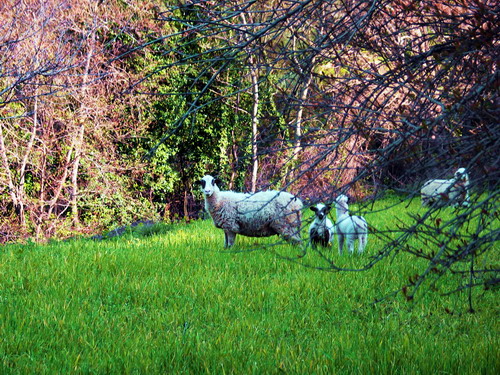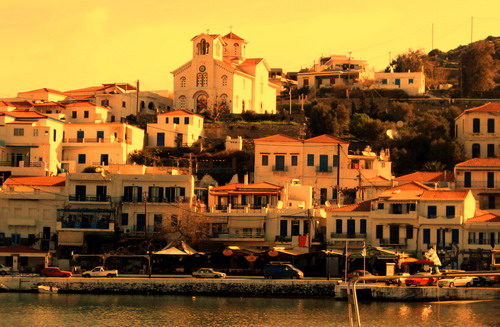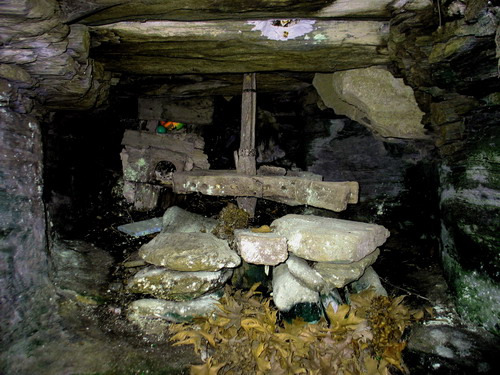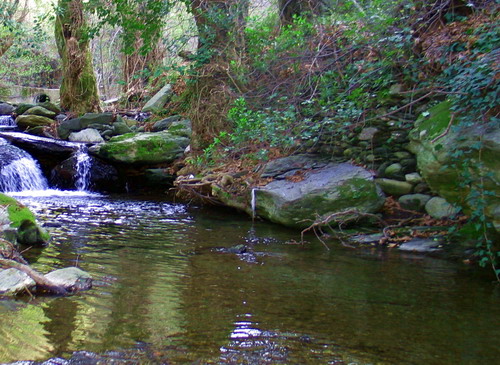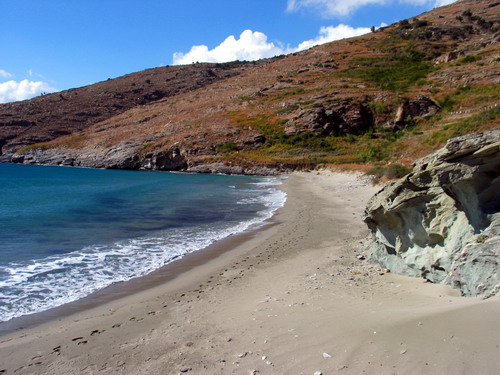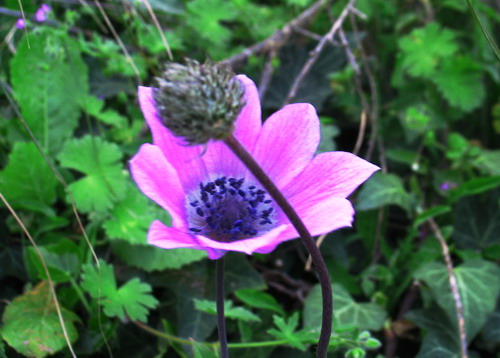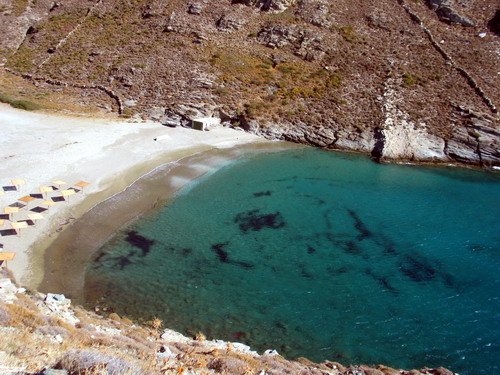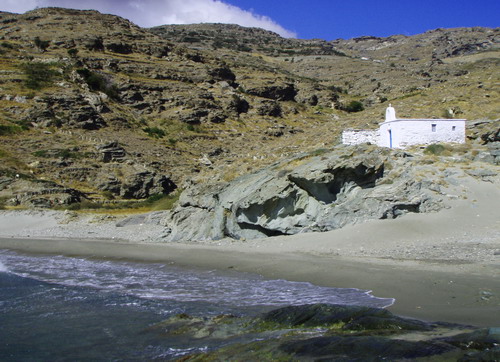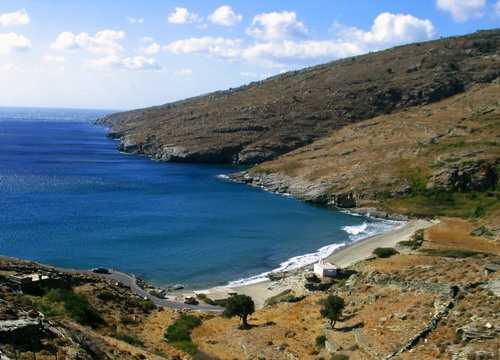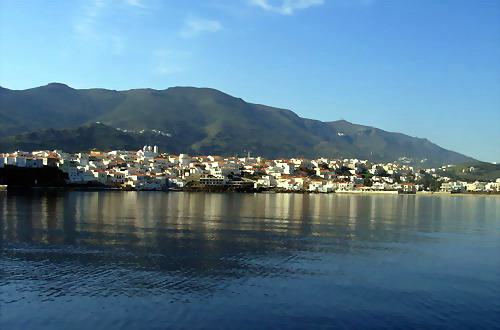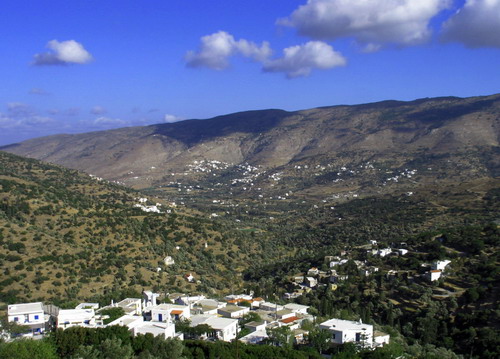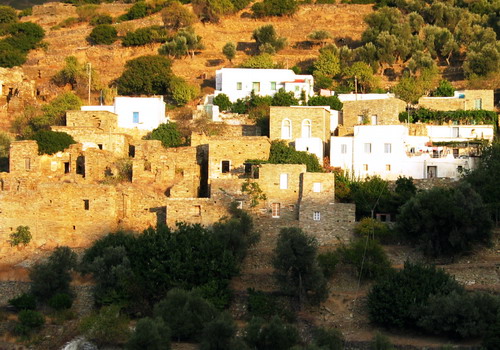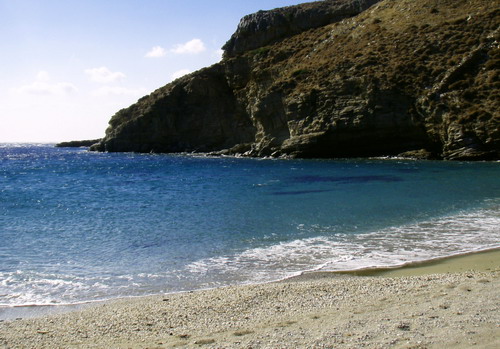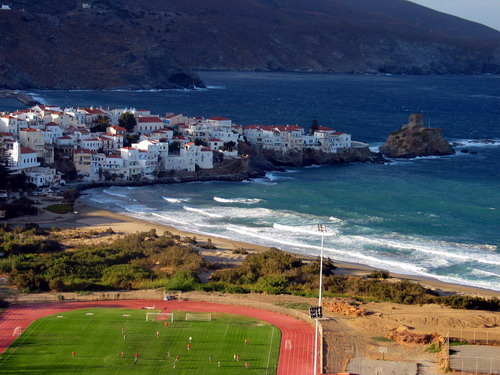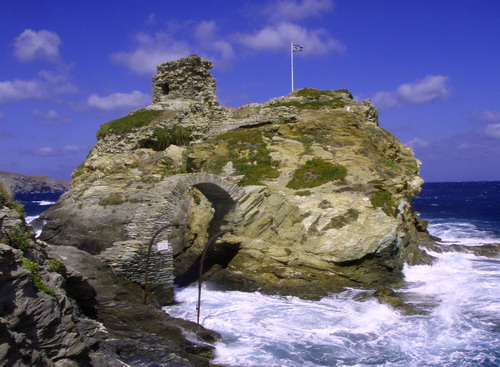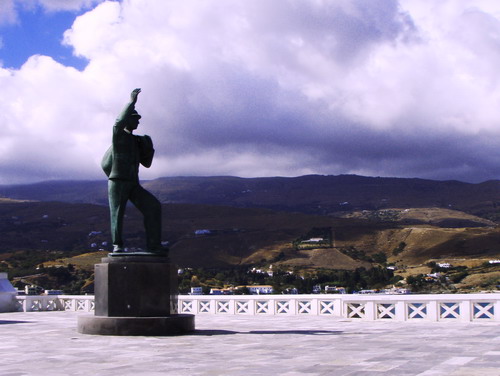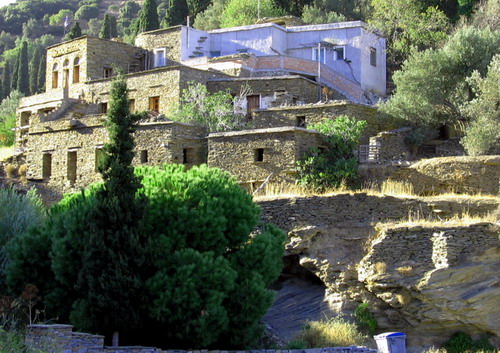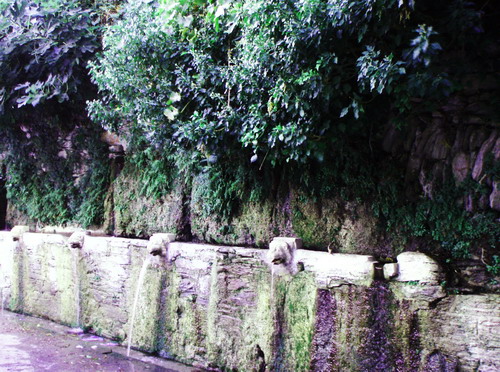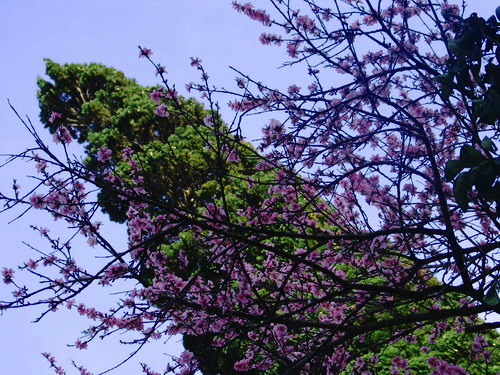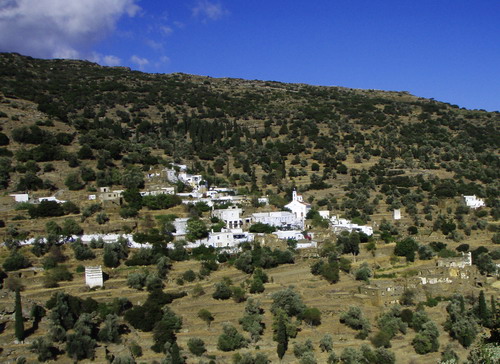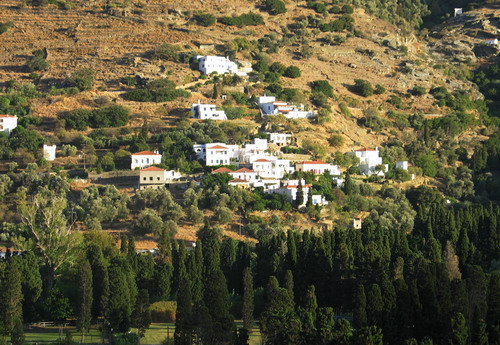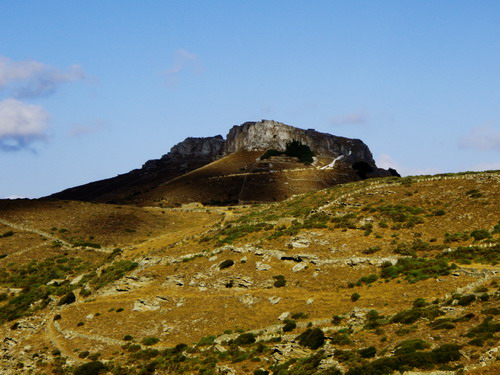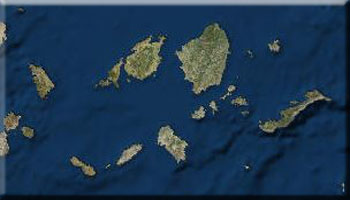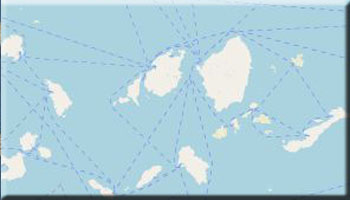Andros is the northern most island of the Cyclades and second largest, after Naxos, with a breadth of 40 kilometers at its widest point and a length of 17 kilometers at its longest.
The island's main port is at Gavrio, which has frequent connections to Rafina. Ports at Batsi, Andros Town (Hora), and Korthi offer anchorage for fishing boats and leisure craft.
The island has a number of rivers, canyons, gulleys, and springs; its vegetation is dense and varied and the landscape dotted with plane trees, walnut trees, and oaks. Several routes are framed by woods or skirt streams and cascades. There are a number of cobblestone footpaths, or kalderimia, for ramblers.
The island was likely named after a Cretan general by the name of Andros. It was also known as Lasia, a reference to its verdant landscape, and Hydroussa, a reference to its water resources. In some sources, the island appears as Gavros, a name preserved today in the name of the island's port, Gavrio. Archaeological evidence supports the existence of developed settlements on the island since at least the Mycenaean period.
The island achieved prominence in the Geometric Period (9th-7th centuries B.C.), as suggested by ruins of a settlement at Zagora on the northwestern coast near Zaganiari. The island's size, location, sheltered harbors, dense vegetation, and water attracted settlers' interest early on and since 3000 B.C. settlements flourished at Strofila and Makroyiali; at Plaka, there's evidence of settlements from 2000-1500 B.C., while Zagora peaked in 1000 B.C. Ypsili, a settlement near Aprovatou, peaked a little later.
In Classical times, Palaiopolis served as the island's capital, and the city's coinage around this time suggests great prosperity. These finds, along with the Hermes of Andros, are exhibited at the Archaeological Museum in Andros Town (Hora).
Andros came under Roman rule, before passing into the hands of the Venetians and then the Ottomans. The Byzantine churches on the island-two examples are Taxiarhis at Ypsilos at Melida and Koimissis Theotokou at Messaria-date from the 11th century. The Monastery of Ayia (also known as the monastery of Zoodohos Piyi) near Batsi was founded in the 14th century; foundations for the Moni Ayiou Nikolaou were laid in 1560 and the monastery underwent restorations in the 18th century. The Moni Panachrantou was founded in the mid-17th century. The first established pre-independence revolutionary school was housed in Ayia Triada at Korthi in 1813.
The banner of the revolution was raised on the island on May 10, 1821, by Theofilos Kairis and the island actively participated in the struggle for independence.
In modern times, the island developed its merchant marine sector. Dimitrios Moraitis inaugurated the first route linking Greece to North America in the early 20th century; in 1939 Andros's shipping registry ranked second, after that of Piraeus.
- Ayios Petros Tower at Ano Ayios Petros. Cylindrical tower, built from slate. The tower sits on a 9.40-meter diameter base and extends to 20 meters. It's believed to date from the fourth or third centuries B.C. or even the Mycenaean period.
- Makrotantalos Tower. The structure is also sometimes referred to as the Castle of Ostodosia. It's a typical example of Venetian defensive architecture on the island. The tower is located at the rocky end of Pyrgos beach on the northern tip of the island's western coast.
- Vryokastro at Varidi. Sections of the island's fortifications are preserved here. The walls protected inhabitants from raids.
- Kastellaki at Gides. Small fortifications opposite the Kalokairini settlement.
- Fryktoria in the Ayia Marina area at Makrotantalos. Tower used to relay messages across the Aegean; only a section of its base is preserved.
- Monastery of Zoodohos Piyi. The Monastery of Zoodohos Piyi (Life - Giving Source), also known as Moni Ayias, is located at Kapsorahi along the route linking Batsi to Gavrio. It's one of the oldest monasteries in the Cyclades.
- Byzantine - era Monastery of Sotiros in the Vitali district
- Archaeological site of Palaiopolis. Excavations initiated in 1830 uncovered, two years later, the Hermes of Andros - a headless female sculpture removed to the National Archaeological Museum in Athens.
- Archaeological Museum of Palaiopolis: the museum has interesting finds from sites around the island.
- Ancient Zagora. The ancient settlement of Zagora is located on a remote mountain plain, about 160 meters above sea level, on the Zagora peninsula.
- Ypsili Archaeological Site (also known as Aprovatou). Excavations have unearthed ruins of an ancient settlement and a fortified acropolis with an Archaic temple.
- Apoikia and the Sariza mineral springs.
- Apatouria village, with its arched stone bridges, rustic cottages, and lush Pythara ravine.
- Stenies village, home to the island's sea captains, with picturesque alleys winding around homes; note the communal laundry, old pasta factory, and the biggest watermill in the Balkans.
- Mesaria, the financial and trade center of the island under Byzantine rule; note the church of Archangel Michael.
- Lamyra, a verdant village known for its streams and springs.
- The Byzantine-era monasteries of Panachrantou and Ayios Nikolaos; the former perches on Mount Katafiyi and the latter is near Achla beach.
- The Foros cave in Mesaria's Aladinou district.
- Faneromeni Castle in the Korthi district; it was built during the Middle Ages for locals to take shelter during pirate raids.
- Dipotamata, a pretty valley that extends for seven kilometers in the northeastern area of the island, between Syneti, Palaiokastro, and Kochylou.
- Dovecotes around the island, but mainly around Dimos, are unique examples of vernacular architecture.
- The church of Ayia Triada (Holy Trinity) at Korthi, which housed the first pre -independence school on the island. The church houses a number of rare relics and manuscripts.
- The Byzantine-era churches of Ayios Ioannis Theologos and Ayios Nikolaos at Korthi and Ayios Georgios at Farali, along the secondary route to Kapparia.
- Watermills, especially around Korthi, where over 40 watermills have been preserved near Dipotamata as well as at Aidonia, Vouni, and Piso Meria.
- The Archaeological Museum in Andros Town (Hora).
- The Museum of Contemporary Art in Andros Town (Hora).
- The Maritime Museum in Andros Town (Hora).
- The Museum of Traditional Arts and Byzantine Icons in Andros Town (Hora).
- The Kaireios Library in Andros Town (Hora).
- The Kydonieos Foundation in Andros Town (Hora).
- The Olive Museum (Pitrofos).
- The Tower of Agadaki (Hora).
- Ayios Petros: organized sand beach.
- Liopesi: sand beach near Gavrio.
- Psili Ammos: organized sand beach near Ayios Petros.
- Ayios Kyprianos: pebble beach at Kypri.
- Lykeio: organized sand beach at Batsi.
- Kolona: sand beach at Batsi.
- Stivari: shingle beach at Stivari.
- Anerousa: organized sand beach at Aprovatou.
- Ayia Marina: pebble beach at Aprovatou.
- Ayia Eleousa: pebble beach at Palaiopolis.
- Ateni: sand beach at Katakoilo.
- Vori: sand beach near Arni.
- Lefka: sand beach near Fellos.
- Selki: sand beach at Makrotantalo.
- Kaminaki: sand beach near Makrotantalo.
- Vlyhada: pebble beach near Makrotantalo.
- Vitali: sand beach near Vitali.
- Mikri Peza: sand beach near Makrotantalo.
- Megali Peza: sand beach at Makrotantalo.
- Gides: sand beach at Gides.
- Tis Grias to Pidima, at Korthi.
- Mylos at Ormos.
- Small beaches at Vintzi, Ayia Ekaterini, Bouro, and Melissa featuring sea caves.
- Syneti, featuring sea stalactites.
- Ai Yianni, beach at Kremmydes; accessible only by boat.
- Plaka, on the island's west coast.
- Steno at Steno.
- Neiborio and Paraporti, the two beaches nearest Andros Town (Hora), can be reached on foot.
- Yialia and Piso Yialia off the road to Stenies.
- Ahla at the mouth of the Ahla River.
- Halkolimionas on the island's west coast.
Andros Town (Hora):
- Ploes, annual music and arts festival organized by the Kydonios Foundation
Gavrio:
- Gavriotika, cultural festival held during the first fortnight of August that opens with five days of sports events—chess tournament, egg relay, sack race—followed by exhibition of paintings by local amateur artists. On the closing day, visitors are treated to fish stew (kakavia) and wine.
- Karnavali, festival held on the last Saturday of the pre-Lenten carnival featuring a costume and float parade, fireworks, and dance.
- In August, a traditional glendi (music and food) is held in the village square at Ano Ayios Petros with violins, tsipouro, and wine.
- At Kypri, a traditional glendi is held on October 2 to mark the feast day of Ayios Kyprianos.
- Various events are organized along the Gavrio waterfront on December 6 in observance of the feast day of Ayios Nikolaos, the town’s patron. The centerpiece is a parade by torch-wielding schoolchildren accompanied by the Philharmonic marching band.
Batsi:
- Folk dance groups from throughout Greece participate in a dance exhibition in Batsi’s main square every September.
Makrotantalo:
- Annual cultural event organized in August to highlight folk traditions; it features music and free wine, and is held at the Kallivari elementary school.
- On September 7, a religious and folk festival is held at the church of Ayios Sozon in observance of the saint’s feast day. Services are followed by food served in the courtyard.
- On August 29, the feast day of Ayios Ioannis Prodromos is observed with a folk festival featuring food and wine.
Ammolohos:
- Paniyiri (religious and folk festival) on August 15 in observance of the feast of the Dormition of the Virgin. After morning church services, blessings are offered at homes where sweets and refreshments are offered; in the evening, traditional music, dancing and food—tsipouro, tripe soup (patsas), and meze—are offered at an open feast in the elementary school courtyard.
- The feast of Ayia Sofia on September 17 is observed with church services, followed by blessings offered at homes where sweets and refreshments are offered; in the evening, there’s dancing and food—tsipouro, local wine, and sugar-dusted almond cookies (kourambiedes)—offered in locals’ front yards.
- Paniyiri (religious and folk festival) on July 17 in observance of the feast of Ayia Marina. After morning church services, blessings are offered at homes where sweets and refreshments are offered; in the evening, a dance featuring traditional music is held.
- Paniyiri (religious and folk festival) on August 23 in observance of the feast ninth day memorial of the Dormition of the Virgin. After morning church services, blessings are offered at homes where sweets and refreshments are offered; in the evening, a dance featuring traditional music is held.
- Paniyiri (religious and folk festival) on July 27 in observance of the feast of Ayios Pandeleimon. After morning church services, blessings are offered at homes where sweets and refreshments are offered; in the evening, there’s dancing and drinking.
- Paniyiri at Pano Katakoilo on August 28 in observance of the feast of Ayios Ioannis Nisteftis at Kato Katakoilo. Evening prayer service is followed by the breaking of bread, then dancing with live traditional music.
- Paniyiri on August 15 in observance of the feast of the Dormition of the Virgin and on September 26 in observance of the feast of Ayios Ioannis Theologos; church services followed by blessings offered at homes where refreshments are offered, then dances with live traditional music at local tavernas.
Fellos:
- Paniyiri (religious and folk festival) on March 25 in observance of Evangelismos, the Assumption of the Virgin. After services, blessings are offered at homes where sweets and refreshments are offered.
| MUNICIPALITY OF ANDROS | 2282360200 |
| CITIZENS SERVICE BUREAU (KEP) | 2282029003 |
| HEALTH CENTRE | 2282022222 |
| HARBOR POLICE | 2282071213 |
| POLICE STATION | 2282022300 |
| FIRE STATION | 2282042099 |
| TAXI STATION | 2282022171 |
| BUS STATION | 2282022316 |
| INFORMATION CENTRE | 2282025162 |










